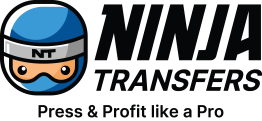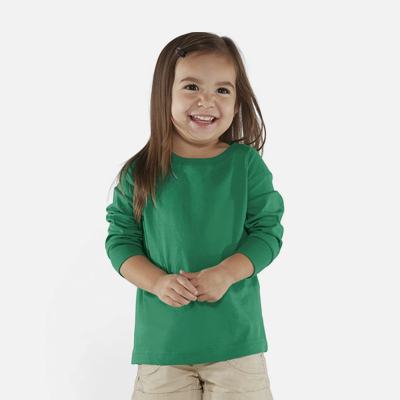Welcome to Chapter 9 of The Ultimate T-Shirt Business Success Guide.
In the t-shirt industry, marketing is more than just a tool for success—it's the engine that drives your business forward. Beyond branding, which defines your business identity, and advertising, which promotes your products directly, marketing is about strategically positioning your business to meet customer needs and preferences.
In today’s digital age, there has been a massive shift towards online marketing. A recent report shows that 93% of Americans are regular internet users, spending almost 7 hours a day online—double the amount of time from a decade ago.
This trend highlights the critical importance of utilizing digital channels to grow your business. For t-shirt entrepreneurs, this means creating a targeted marketing strategy and making the most of all available approaches. In this chapter, we'll guide you through crafting an effective digital marketing plan to elevate your t-shirt business. Ready to harness the power of digital marketing and take your business to the next level? Let’s dive in!
Table Of Contents
- Traditional vs. Digital Marketing
- Crafting a Winning Marketing Plan
- Key Elements of a Solid Marketing Plan
- Setting "S.M.A.R.T." Goals
- Types of Digital Marketing
- SEO Basics
- Social Media Marketing
- Email Marketing
- Paid Advertising
- Content Marketing
- Influencer Marketing
- Data-Driven Decisions: Tracking Progress, Optimizing Results
- Analytics Tools
- Interpreting Data
- A/B Testing
- UX and CRO
- Cutting-Edge Marketing Trends for the T-Shirt Business
- New Marketing Technologies
- Taking Advantage of Emerging Opportunities
- Adapting to Change
- Marketing Wisdom: Tips for T-Shirt Business Success
- Time-Tested Marketing Tips
- Experimentation and Continuous Learning
- Conclusion: Harnessing the Power of Marketing

Traditional vs. digital marketing
Traditional marketing includes physical store presence, street and print advertising, trade shows, networking, and sales calls. It's tangible, often making a lasting impression, and reaches local customers effectively. However, measuring impact can be costly and more challenging, with a limited reach compared to digital methods.
Digital marketing encompasses online storefronts, email campaigns, search engine optimization (SEO), and social media platforms. This approach offers more expansive reach, precise targeting, and easier results tracking. While cost-effective, it demands continuous content creation and staying updated with technology.
The key to successful marketing is finding the right balance between traditional and digital methods. This balance depends on your target audience, budget, and business model. The goal is to blend both to maximize reach and engagement.

Crafting a winning marketing plan
A well-crafted marketing plan is your roadmap to success. It outlines clear strategies and goals, helping you navigate the competitive landscape with precision and purpose. These are the essential components.
Key elements of a marketing plan
Defining your audience: Understand market demographics, interests, and purchasing behaviors.Positioning your brand: Clearly articulate what sets your brand apart in the t-shirt industry.
Allocating budget: Distribute your marketing funds wisely across chosen channels.
Choosing marketing channels: Select the right mix of digital and traditional channels.
Content strategy: Develop engaging content that speaks to your audience.
Competitor analysis: Keep an eye on your competitors' strategies and identify opportunities.
Monitoring and analytics: Implement tools to track the success of your marketing campaigns.
Adaptability: Be ready to adjust your strategy based on market feedback and changing trends.
Setting "S.M.A.R.T." goals
Specific: Clearly define what you want to achieve, e.g., increasing website traffic by 20%.Measurable: Attach metrics to track progress, like the number of new subscribers or sales figures.
Achievable: Set realistic goals considering your resources and market conditions.
Relevant: Ensure your goals align with your overall business strategy and values.
Time-Bound: Assign deadlines, such as gaining 500 new social media followers in three months.

Types of digital marketing
In the t-shirt business and almost any other business, digital marketing isn't just an option–it's necessary. It's the primary vehicle that drives your brand's message to a global audience, harnessing the power of the internet to reach potential customers far and wide.
SEO basics
SEO (Search Engine Optimization) is crucial for improving your website's visibility in search engine results and is vital for both self-hosted sites and third-party platforms. It involves keyword research to understand what potential customers are searching for and on-page optimization and quality content to make your site more appealing to search engines.
SEO also involves good technical health to ensure the site is user-friendly and remains crawlable and indexable. Plus, offsite or link-building strategies are needed to drive authority. This process helps to improve a site's online visibility and, therefore, attracts more organic traffic.
Google Business Profile is a powerful tool for managing your online presence. Claiming your business listing and setting it up enhances your visibility on Google searches and Maps. You will need a business address so they can confirm your listing.
Other free listings: Expanding your online footprint is vital. Listing your business on platforms like Bing, Yellow Pages, and other directories increases your visibility. Set up profiles across as many relevant platforms as possible, as this enhances your chances of being found by potential customers and improves your overall online presence.
Social media marketing
The ubiquity of social media is undeniable. Almost every successful brand boasts an active and engaging social media presence, making it an indispensable tool in the marketing arsenal. Whether leveraging paid advertisements or creating compelling content to grow a following and drive organic traffic, social media's influence is too significant to be ignored. Here are the top platforms for the t-shirt business.
Facebook: Engage your audience with diverse content, including posts, images, and videos. Utilize Facebook's paid ads for targeted reach. Interactive features like polls and live videos can also boost engagement.
Instagram: This visually-driven platform is ideal for showcasing t-shirt designs. Use relevant hashtags, engage through stories, and consider paid ads for broader reach. Instagram's visual nature makes it a perfect fit for fashion and apparel marketing.
Pinterest: Showcase your designs and link directly to your products. Pinterest is a powerful tool for driving traffic to your website, with its user base actively seeking style inspiration.
Twitter: Leverage real-time engagement and trending topics to keep your brand relevant. Paid ads can help reach a wider audience. Twitter is ideal for quick, timely interactions and brand updates.
TikTok: Embrace the power of short, engaging video content. Participate in trending challenges to increase visibility and consider paid ads for targeted demographics. TikTok's format is excellent for creative brand awareness campaigns.
Snapchat: Create ephemeral content that offers a behind-the-scenes look at your brand. Utilize ads and geofilters to target specific locations or events, making it ideal for time-sensitive promotions.
LinkedIn: For B2B marketing, LinkedIn is invaluable. Share content that highlights your business's professionalism and network within industry circles. LinkedIn ads can target specific professional demographics.
Others: Pay attention to other platforms like Reddit and Discord where niche communities can be tapped into. Each forum has its unique audience and style, so choose those that align best with your brand and target market.

Email marketing
Choosing the right platform: Popular choices include MailChimp, Constant Contact, HubSpot and Drip. Look for features like automation, analytics, and design flexibility. While free versions are a good starting point, paid plans offer advanced features. MailChimp is highly recommended for its user-friendly interface and robust features.
List building: Growing your subscriber base is crucial. Tactics include offering incentives (like discounts or exclusive content), utilizing sign-up forms on your website and social media, and leveraging events and promotions to encourage sign-ups.
Newsletter optimization: To drive opens and clicks, focus on compelling subject lines, personalized content, and clear calls-to-action. Segmenting your audience for targeted messages and consistently delivering valuable content is also crucial.
Email frequency: Striking the right balance in email frequency is vital. Too many emails can overwhelm subscribers, while too few can make them forget about your brand. Generally, sending a weekly or bi-weekly newsletter is effective, but this can vary based on audience preferences and industry norms.
Paid advertising
Paid ads are advertisements for which businesses pay to appear in front of audiences, as opposed to organic traffic, which comes from non-paid sources like search engine results or social media followers. Paid ads offer immediate visibility and targeting options; organic traffic is built up over time through content and SEO. A good analogy is the difference between renting and buying a house.
Pros, cons, and budgeting: Paid advertising provides quick results and precise targeting but requires ongoing investment. According to Deloitte, advertising budgets make up about 13.6% of the total for small businesses in 2023. Balancing between paid advertising and an SEO strategy to attract organic traffic is crucial for a sustainable marketing strategy.
Google Ads is the biggest platform for paid online advertising. It allows businesses to display ads on Google's search results and advertising network. Setting up campaigns involves selecting keywords, creating ads, and setting a budget. When managed properly, Google Ads can be highly effective, offering tools for targeting, measuring, and optimizing ad performance.
Microsoft Ads is a popular alternative choice and offers lower cost-per-click and higher conversion rates due to less competition, depending on the industry.
Social media ads on platforms like Facebook, Instagram, TikTok, and YouTube have become increasingly effective. These platforms offer sophisticated targeting options and the ability to create engaging ads that blend with organic content. Combining paid and organic strategies on these platforms can enhance reach and engagement.
Content marketing
Landing pages: The design of landing pages is crucial for converting visitors into customers. They should be visually appealing, easy to navigate, and have a clear call to action. Including helpful and valuable content that answers potential customers' questions or addresses their needs can significantly increase conversion rates. A/B testing different designs and messages can also help optimize these pages for better performance.
PDPs: Product Description Pages cannot be overlooked. Ideally, they are unique (rather than copied from the manufacturer) and offer helpful information about the product. Take the opportunity to sell the item while ensuring the key details are there (price, material, sizes, and how to check out).
Blogging: Blogging is a powerful content marketing tool. It helps improve SEO for your website, driving organic traffic through keyword-rich, informative content. Consistent blogging, ideally once or twice a week, can establish you as an expert in the t-shirt industry. The content should be relevant and engaging while providing value to your readers–whether it's fashion tips, industry insights, or how-to guides related to t-shirt design and printing.
Social media content: Creating compelling content for social media, such as videos, stories, and posts, is vital. This content should not always be overtly promotional but aim to engage your audience and subtly drive traffic to your sales channels. Showcasing your products in use, sharing customer testimonials, and providing behind-the-scenes glimpses can make your brand more relatable and drive interest in your products.
Influencer marketing
Influencer marketing involves partnering with individuals with a significant social media following to promote your products. These influencers have the power to affect the purchasing decisions of their followers due to their authority, knowledge, relationship, or position.
Platform selection: The choice of platform for influencer marketing depends on where your target audience is most active. It's essential to consider the demographics of each platform's user base and the type of content that performs best there.
Instagram & TikTok: The two top players. Instagram is perfect for high-quality images and stories featuring your t-shirts. Influencers can use these features to create a lifestyle around your brand. TikTok, on the other hand, offers a platform for more dynamic, creative content. Short, engaging videos by influencers can quickly go viral, offering massive exposure. Both platforms have unique engagement tools like tags, hashtags, and challenges that can be leveraged to increase visibility and engagement.
Pro tip: Both platforms now have "shops" where you can sell your merch directly through the app, giving influencers a direct sales channel to send new customers without leaving the site.
Data-driven decisions: Tracking progress and optimizing results
Making data-driven decisions is vital for the success of your t-shirt business. Utilizing analytics tools enables you to track the progress of your marketing efforts and optimize for better results.
Analytics tools
Google Analytics: This comprehensive tool tracks website traffic, user behavior, and conversion rates. It helps understand how visitors interact with your website and which marketing campaigns are most effective. Other tools, such as Matomo and Adobe Analytics, can also be valuable and are popular alternatives to Google Analytics.
Social media insights: Platforms like Facebook, Instagram, and Twitter provide insights into post engagement, audience demographics, and more. These insights are crucial for understanding the performance of your content and ads on social media.
Pro Tip: Any links back to a website should include tracking parameters to allow you to easily assess the performance of particular posts or campaigns and how that is directly related to product sales and revenue.
Interpreting data
Key Performance Indicators (KPIs): Identify metrics like revenue, transactions, traffic, click-through rates, and engagement rates that are the most relevant to your goals.
Conversion rates and audience behavior: Analyze how effectively your marketing efforts turn visitors into customers and understand the behaviors leading up to conversions.
A/B testing
Methodology: A/B testing involves comparing two webpage versions, emails, or ad to see which performs better. It's a method to make informed decisions about design and content.
Example and best practices: Testing two different email subject lines to see which yields a higher open rate. Best practices include testing one variable at a time and ensuring a significant sample size for accurate results.
UX and CRO
User Experience (UX): UX is crucial for gauging how users interact with your e-commerce site. Metrics like page views and average engagement time per session provide insights into usage and satisfaction. An optimal UX is essential for keeping visitors on your site longer and encouraging conversions.
Conversion Rate Optimization: CRO focuses on increasing the percentage of visitors who complete a desired action. Key metrics include conversion rates, click-through rates, and exit rates. Tracking these helps identify and rectify bottlenecks in the user journey, enhancing the likelihood of conversions.
Pro tip: Heat mapping tools like Hotjar and CrazyEgg visually represent user interactions on a website, such as clicks, scrolls, and mouse movements. These tools help understand user behavior, identify usability issues, and optimize the site's overall user experience

Cutting-edge marketing trends for the t-shirt business
The marketing landscape continually evolves, with new technologies and strategies emerging regularly. For t-shirt businesses, staying ahead of these trends is key to maintaining a competitive edge.
New marketing technologies
Augmented Reality (AR) and immersive experiences: AR revolutionizes online shopping by offering customers a virtual try-on experience. This technology can enhance customer engagement and reduce return rates by providing a more realistic view of how a t-shirt fits and looks.
AI in ideation and design: AI tools are increasingly used to generate design ideas, graphic mock-ups, and ad content. They can streamline the creative process, allowing for more personalized and varied designs.
Taking advantage of emerging opportunities
Live streaming: Platforms like Instagram, Facebook, TikTok, and Twitch offer unique opportunities for real-time engagement. Live streaming product launches or behind-the-scenes glimpses can create excitement and foster community.
Interactive content and messenger marketing: Interactive content like quizzes or polls can increase engagement, while messenger marketing through platforms like Facebook Messenger allows for personalized, direct customer communication.
Adapting to change
Staying current: Keeping up with the latest marketing trends and technologies is essential. Regularly attending webinars, following industry blogs, and participating in forums can keep you informed.
Flexible strategies: The ability to quickly adapt your marketing strategy in response to new trends and customer feedback is vital. This agility can significantly advantage your business in a rapidly changing market.
Innovation as a priority: Continuously exploring new ideas and technologies keeps your marketing fresh and relevant. Encouraging a culture of innovation within your team can lead to groundbreaking marketing strategies.
Marketing tips for t-shirt business success
In the competitive world of t-shirt businesses, specific marketing strategies have stood the test of time. Combining these with a willingness to experiment and adapt can pave the way for success.
Time-tested marketing tips
Know your niche: Understand the specific market segment you are targeting. Whether it's graphic tees for gamers or eco-friendly fabrics for environmentalists, specificity can make your brand more appealing.
Quality over quantity: Focus on creating high-quality products and content rather than mass-producing items or posts. Quality builds a loyal customer base.
Customer engagement: Regularly interact with your customers through social media, email, and other channels. Engagement builds community and brand loyalty.
Utilize customer feedback: Listen to what your customers say about your products and use their feedback to improve and innovate.
Consistent branding: Ensure your branding is consistent across all channels. This includes your logo, color scheme, messaging, and overall aesthetic.
Leverage user-generated content: Encourage your customers to share photos and stories of your products. This not only provides authentic content but also enhances credibility.
Stay on trend: Keep up with current fashion and pop culture trends, but also be ready to set your own trends.
Invest in SEO: A strong SEO strategy can significantly increase your online visibility and organic traffic.

Harnessing the power of marketing
As we wrap up this exploration of marketing strategies for your t-shirt business, remember that each tactic, from traditional advertising to cutting-edge digital methods, plays a crucial role in your success.
Remember the importance of understanding your audience, the balance between digital and traditional marketing, the power of content and social media marketing, and the invaluable insights gained from data-driven decisions. Implementing these strategies can significantly enhance your brand's visibility and sales.
As you implement your strategy, consider Ninja Transfers as your business partner. Our expertise in custom DTF printing can complement your marketing efforts, offering high-quality products that resonate with your target market.
Looking ahead to the next chapter: Grow Your T-shirt Business and Maximizing Profits will guide you through scaling your business and optimizing your profit margins.













